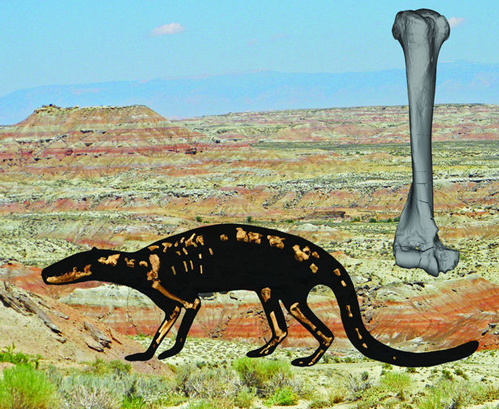Keep Trying, Keep Searching, Keep Finding
Sometimes, it can be difficult to maintain the enthusiasm and motivation of pupils as they struggle with tasks such as reading, writing, and grasping greater complexities associated with numeracy. Here is a tale from the world of palaeontology about how being persistent can eventually yield results.
The Willwood Formation of Wyoming is one of the most researched, documented and explored fossil bearing formations in the world. The rocks that make up the Formation were laid down around ten million years after the extinction of the dinosaurs, the strata dates from approximately 55 million to 52 million years ago. The fossils found document a changing world, with animals taking over the roles in the ecosystem that were once occupied by fearsome dinosaurs like Tyrannosaurus rex and the huge plant-eating Triceratops. Fossils of giant birds, ancient crocodiles and some of the very first large mammal carnivores have been discovered. In fact, scientists have been collecting fossils in this part of the world for over 150 years.
Giant Flightless Birds Once Roamed The Americas

The Kelenken in all its glory. In the past, flightless birds were apex predators in parts of South America.
Picture credit: Everything Dinosaur
Persistence Pays Off in North-Eastern Wyoming
Tens of thousands of fossils of back-boned animals have been collected from this corner of north-eastern Wyoming. However, one of the early mammals, a creature named Galecyon posed a bit of a palaeontological puzzle for the scientists. Although, it had been named and described one hundred years ago, it was only known from a few fragmentary bones and teeth. Galecyon was a member of a group of mammals called the hyaenodontids. It was the hyaenodontids that evolved into the first, large mammalian carnivores, well before the Order Carnivora evolved. The Carnivora (cats, dogs, bears, seals, weasels and so forth) came later.
New Fossil Finds Helps to Map the Evolutionary Path of the Hyaenodontidae

An artist’s rendition of the shape of Galecyon, with its fossilised bones laid out anatomically. Background shows fossil formation, right humerus (inset).
Picture credit: Journal of Vertebrate Palaeontology
Palaeontology
Scientists from the University of Arizona and The Johns Hopkins University (Baltimore, Maryland), never gave up the quest to learn more about how these ancient meat-eaters changed over time. Their persistence and dedication has paid off, as thanks to some more recent fossil discoveries, including limb bones such as the humerus shown above, palaeontologists are now confident in stating that the early hyaenodontids were adapted to tree climbing, but later forms such as Galecyon were evolving into more terrestrial forms. The descendants of mammals like Galecyon evolved into speedy, pursuit predators, niches in ecosystems occupied today by the bigger members of the Order Carnivora, like wolves and lions.
Persistence pays off in palaeontology just as it does in school.
Everything Dinosaur stocks an enormous range of prehistoric animal figures including models and replicas of early mammals: Prehistoric Animal Models and Figures.

